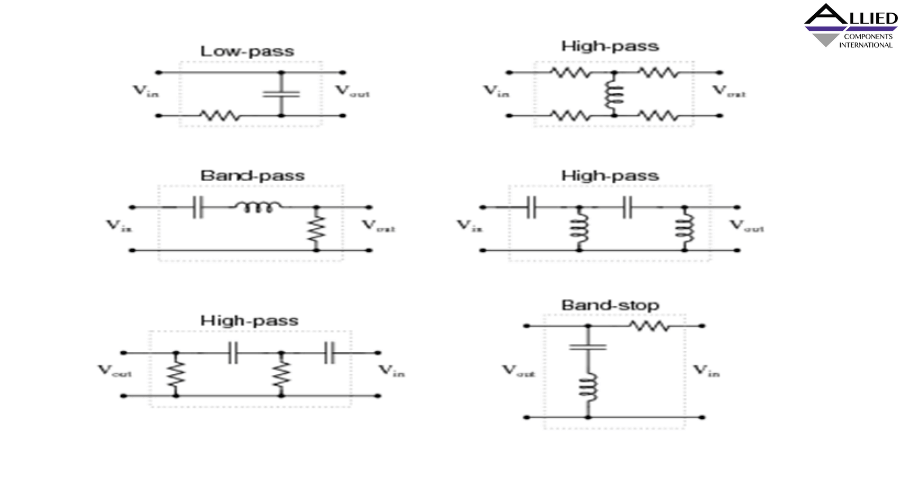Understanding Different Types of Circuit Filters & How They Function

Filtering has vital signal processing applications across a broad spectrum of technologies, from communication and semiconductors to power systems. Read on to learn more about different types of filters and their performance characteristics.
What Is the Role of Filters in Electronics?
Filters in circuits extract (pass) certain frequencies while blocking (attenuating) undesired frequencies. For example, when you tune in to your favorite radio station, a filter passes the desired frequency and blocks content broadcasted in other radio frequencies. Similarly, in DC power supplies, a filter can be used to eliminate high frequencies or interference in AC inputs. Other filter applications include analog-to-digital converters and audio speaker crossover networks.
Four Basic Types of Circuit Filters
There are many different kinds of filters, but the four basic types are:
- Low-pass filter - passes signals with a frequency below a specific cutoff frequency, depressing all frequencies above the cutoff
- High-pass filter - passes frequencies higher than a particular cutoff frequency, depressing signals with a frequency less than the cutoff
- Band-pass filter- combines the properties of both low-pass and high-pass filters into a single filter
- Notch (or band-stop) filter – passes all frequencies above and below a specific range determined by the component values
Active Filter Vs. Passive Filter
Here are the differences between passive and active filters:
- Passive filter circuits use passive components like resistors, capacitors, and inductors. Active filters don’t include inductors but are designed with resistors, capacitors, and active components like operational amplifiers.
- Passive filters operate optimally within the 100 Hz – 300 MHz (with proper design, the upper-frequency limit can be extended to the gigahertz range). However, active filters have a bandwidth limitation, only responding to very low frequencies, such as those toward 0 Hz.
- Active filters can amplify the filter output while passive components lack this capability.
- It’s possible to design high-order active filters without incorporating inductors. Passive filters aren’t suitable for signal attenuation or amplification in applications where inductors are problematic.
Key Filter Performance Characteristics
Filter performance characteristics are denoted or expressed in terms such as:
- Response curves describe filter behavior.
- Attenuation in decibels (dB) is a measure of the loss of signal strength after filtering.
- Signal frequency (f).
- -3dB Frequency (f3dB) is the input frequency at which the output signal is reduced by 3dB with respect to the input.
- Center frequency (f0) is the frequency within the upper and lower cutoff frequency range in band-pass and notch filtering.
- Stopband frequency (fs) is the frequency at a particular attenuation level.
- Bandwidth (β) denotes the width of the band of frequencies that the filter allows to pass through without substantial attenuation.
Circuit filters have contributed to the realization of many modern technologies requiring signal attenuation or amplification. If you’re looking for high-quality passive or active filters, visit the Allied Components International website right away!


